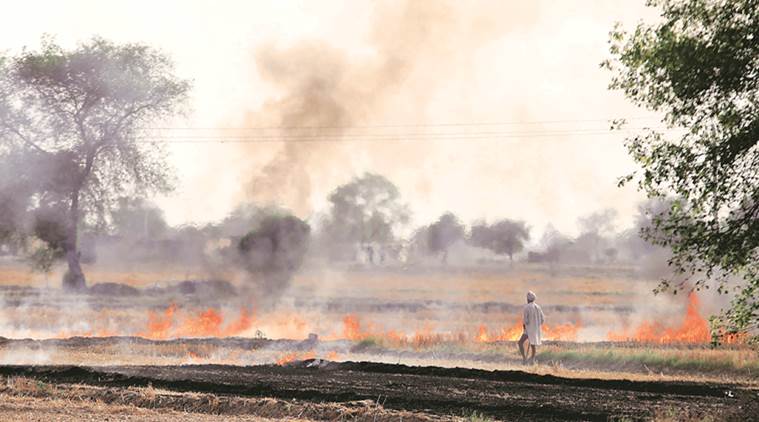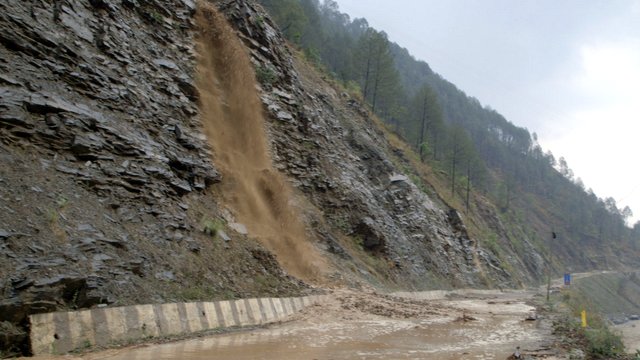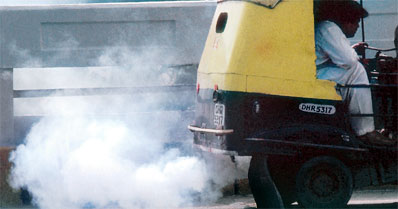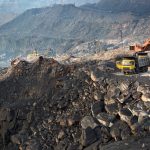IndiaWilds Newsletter Vol. 9 Issue XI
ISSN 2394 – 6946
Nature, Wildlife and our Quality of Life:

IndiaWilds Newsletter PDF – November 2017
The quality of our life and saving our nature, environment and wildlife is inextricably linked. Man started clearing forests to cultivate and start human settlements as part of its first efforts in setting up civilisation. Our mythology as well as historical texts are replete with examples of clearing forests, killing wildlife to “conquer” nature and expand the human footprints. Ironically, today it has come to such a stage that the survival of man as well as his quality of life is dependent on saving the last tracts of wilderness and wildlife on this earth.
The quality of life debate has come to forefront in big cities like Delhi, which are currently battling life threatening smog and pollution. It is another matter that no one is looking for holistic solutions to alleviate the problems, if not completely eradicate them.
The Hon’ble justices have questioned as to why the phased emergency response plan has not kicked into action. The Governments (Union as well as the State Govt. in Delhi) has become completely dysfunctional, as far as saving our nature and environment is concerned and providing a quality of life to the citizens. The court has asked why water has not been sprayed from Helicopters as per the plan. It is another matter that the Government doesn’t want to spend money and is in general sloth in taking decisions where the life of citizens are concerned.

Smog in Delhi Courtesy – online media
However, the water spray from Helicopters is also a reactive measure. The reason for this is that preventive measures like stopping people from burning paddy stalk in Punjab and Haryana has failed. The farmers have threatened the officials and are openly violating the orders and burning the paddy stalk. The Government, which had shown amazingly strong coercive skills in bringing the country to the standstill a year ago by bringing the unprecedented note-ban or demonetisation as it is popularly known, is suddenly appearing very weak in implementing the court orders.
Virtue out of Vice:
Since the preventive measures have failed, no one is thinking whether in the first place these preventive measures were well thought off. No other solution was tried out to remove the challenge of intensive monitoring of the fields. Instead the National Green Tribunal (NGT) on 16th of November 2017 is now pushing for use of the paddy stalk as fuel in power plants. It has asked National Thermal Power Corporation (NTPC) to file a report about the amount of agricultural residue that can be used in pellet form in combination of coal as fuel in the power plants. This is trying to make Virtue out of Vice. However, such moves normally work to a limited extent. Again procuring of the paddy stalk will be done from large farmers leaving the others to burn it in their fields. The best way is to eliminate the root causes.
Time to Look at Root Cause:
A year ago, we had analysed the root cause of paddy stalk burning. We had found that the root cause of smog in Delhi is the faulty procurement policy of the Government.
According to the Agriculture ministry appointed Commission for Agricultural Costs and Prices report titled “Price Policy for Kharif Crops, The Marketing Season 2016-2017” the paddy cultivation in Punjab, Haryana is not water efficient and these states consume much higher water in cultivating paddy. The people in these states don’t consume paddy like most of the other paddy growing states. The climatic conditions in these states of Punjab, Haryana are not conducive for paddy. The semi-arid landscape is not favourable for paddy as it requires more water for cultivation. No wonder, Punjab is the least efficient state in growing paddy as far as water consumption is concerned. The per hectare water use by irrigation in these states is 161.78 lakh litre in Punjab followed by Tamil Nadu (137.50 lakh litre) and Uttar Pradesh (102.00 lakh litre). As against these states, per hectare water use by irrigation in Assam, West Bengal and Bihar is 50 lakh litre, 59.86 lakh litre and 66 lakh litre, respectively. If water consumption is measured in terms of per kilogram of rice, West Bengal becomes the most efficient state which consumes 2169 litre to produce one kg of rice, followed by Assam (2432 litre) and Karnataka (2635 litre). The water use is high in Punjab (4118 litre), Tamil Nadu (4557 litre) and Uttar Pradesh (4384 litre). For more details check: https://www.indiawilds.com/diary/deadly-delhi-smog-agricultural-policy/

Paddy Stalk burning in Punjab
So the procurement agencies should procure paddy from the states that are more water efficient and not Punjab and Haryana. Without procurement of paddy, the farmers in these states will stop growing paddy as the staple food in these areas is roti and not rice. So the challenge of stubble burning will go away. That will ensure the problem of smog in Delhi NCR is controlled to a large extent. Quality of life nose-dives the farther we move away from nature.
Concretisation, Heat Island & Urban Flooding:
Urban India skyline is dotted with tall towers. Virtually every inch of land is now concretised. Trees in urban areas are few and far between. This results in the air heating up and creating a heat island effect. Studies have shown that rural areas are about 7 deg cooler than Urban areas. (Ref: Climate Change & Heat Island, IndiaWilds, May 2015, https://www.indiawilds.com/diary/indiawilds-newsletter-vol-7-issue-v/ )
Another problem faced by the urban areas is the climate change induced sudden, untimely and more intense precipitations during monsoons. The concretised urban areas have no way for the water to seep into the ground and recharge the groundwater. So the result is flooding. For example in Bangalore between August 15th of August to 15th October 2017, it has rained 1200 mm. There are hardly any rain harvesting systems in the big apartments. The apartments and other places don’t have green areas. The earlier green areas are now increasingly being converted into buildings or concrete courts for various games. Even walking pathways are paved reducing the area available for water to percolate into the ground. Even in bungalows, which are increasingly becoming rare, the owners are concretising the entire area by cutting away the trees as they feel that it becomes easier to sweep and clean the concretised areas. Earlier the storm water drains used to take the water to big lakes. Now lakes are all encroached by the real estate mafia and polluted. The storm water drains, if at all they are functional are lined with concrete, so water can’t percolate. So it is quite natural that the people face problems during the rainy season.
Water Shortage & Quality of Life:
In an era when water or the lack of it is leading to vicious wars, we should not be impervious to the issue of water being wasted in cultivating crops not suited to the climatic conditions. Similarly we should be very careful about the use and waste of water in urban India. Today our agriculture in semi-arid Punjab, Haryana and many other states is dependent on borewells and water from dams. The huge amount of water drawn through tubewells deplete the ground water levels. Not only individuals but also industries are extracting ground water, often without permission. In Delhi NCR, the DMRC (Delhi Metro Rail Corporation) has installed 276 tubewells without permission of the Jal Board and the issue is being adjudicated by the National Green Tribunal.
A lot of water to the cities also comes from the dams. It is well known that though in 1954 dams were described as “Temples of Modern India” by the then Prime Minister Shri Jawahar Lal Nehru, he changed his views in four years after he found that dams cause much misery to people and wildlife and submerge large areas. Unfortunately, the rest of India continues to believe that dams are beneficial. A lot of people take water for granted and don’t take steps to save water. With increasing population in our metros, it is no wonder that many areas in metro cities don’t have regular water supply. Instead of trying to resolve the root cause of urban water crises by plugging the leakages, decongesting big cities, and promoting small irrigation projects, the Government is talking about irrational river linking projects. The river linking projects are not only irrational but also environmentally disastrous. (Ref: River Linking: A Colossal Blunder, IndiaWilds, April 2014, https://www.indiawilds.com/diary/indiawilds-newsletter-vol-6-issue-iv/ )
Hunger for Power, Social Behaviour & Quality of Life:
Even today, our energy consultants term the hydel power to be clean power. On the face of it the power generated from dams are clean as they don’t spew toxic fly ash like the Thermal power plants. However, the environment impact of the dams are also very high. Modern lifestyle demands more power. Each individual is now more power guzzling due to use of power-hungry personal devices as well as various machines in our homes for our comfort. There was a time when kids used to play outside. Today, safety and pollution issues have ensured that they just stay indoors and watch TV. Similarly, the general social behaviour has changed from visiting friends and neighbours to watching TV.
Using all these equipment which demand lot of power has ensured that the power demand has shot up. Coupled with unethical power supply utilities who raise prices in the name of lack of efficiencies and no option for the consumer to change his/her electrical utility company, individuals have to pay more for their monthly power usage. In some places the situation has become so bad, that people are not able to afford it. A report from Australia suggests that either people have to eat or watch TV. So some people are being forced to cut down on watching TV to rein in their power budget so that they can afford to eat. (Ref: Aussies choosing between fresh fruit and keeping the lights on: https://au.finance.yahoo.com/news/aussies-choosing-fresh-fruit-keeping-lights-041254574.html )

The shooting demand for power by an increasing human population is also having a tremendous negative impact on our forests and environment. Realising this there has been moves to explore alternate power sources like renewable energy. Initially, people thought windmills are the answer, as wind power can be used to move giant blades and motors in wind mills and convert it into energy. However, windmills also have a negative impact on the environment and wildlife. A lot of wind mills came up on our country side and entire hills were cleared up to set up these giant wind mills. However, they were effective in some months and also resulted in many deaths of wild birds and animals. Thousands of hectares of pristine forest land were also sacrificed for this.
Transparent Solar Technology: A sliver of hope?
The solar power started appearing as a better option. With increased efficiency of the chips and technology evolution has resulted in solar power being affordable. However, one needs to find space to install solar panels. Despite the promise of rooftop solar power, it is still not a reality. However, research on solar power is very promising and early demonstrations suggest that this can be our future solution.
Researchers in Michigan State University led by Richard Lunt, the Johansen Crosby Endowed Associate Professor of Chemical Engineering and Materials Science at MSU, have developed see-through solar materials which can be applied to the windows and tap solar energy. This removes the twin challenges of rooftop solar panels of being bulky and costly. The scientists have termed these transparent solar cells as the future and have said that these can drastically reduce the demand for fossil fuels.
Interestingly this technology uses specially developed organic molecules to absorb invisible wavelengths of sunlight. The researchers can “tune” these materials to pick up just the ultraviolet and the near-infrared wavelengths that then converts this energy into electricity. There may be some health benefits of absorption of the invisible wavelengths by this process as well.
The researchers have estimated that the area of glass surfaces in USA can be between 5 billion to 7 billion square meters. Applying transparent solar technologies to such huge amount of glass panels can result in fulfilment of some 40 per cent of energy demand in the U.S. At the moment the efficiency of these transparent solar cells is only about 5% and in future it is likely to increase. Using these transparent panels in the cars and other vehicles as well as personal devices like cellphones would also alleviate some of the power problems especially during traveling.
In USA politics, the Republicans are against fossil fuels because they are funded by the Koch Brothers who have massive interests in coal and other fossil fuels. So it may happen that the technology adoption can be faster in other countries than the place where it is invented. With India making efforts in deploying solar power, these kinds of technologies should also be investigated and adopted. May be future smart cities will come with such kinds of transparent solar cell applied housing?
At the moment, large dams have filled up due to siltation and their carrying capacities have reduced. Denudation of the hills and the areas surround the streams and rivers have resulted in much of soil erosion and finally deposition in the rivers. These find their way to the dam site and get deposited there. The Chief Minister of Bihar has even openly blamed the Farakka barrage for the floods in Ganga (Ref: Role of Dam in Floods, IndiaWilds, August, 2016, https://www.indiawilds.com/diary/indiawilds-newsletter-vol-8-issue-viii/ )
So sooner or later we have to reduce our dependence on large dams. Similarly, many older coal-fired thermal power plants needs to be shut down either due to their inefficiency, high cost of power production or pollution. So the emerging Transparent Solar Technology and any other such innovations would be of help in removing some of our environmentally destructive projects.
Dependence on fossil fuels, environmentally devastating hydroelectric projects, unsustainable cropping patterns of growing crops in non-conducive climate, cutting away trees and forests and concretising the entire landscape are some of the practices that are extremely illogical and disastrous for our nature and environment and is having a greater impact on the quality of life of people with each passing day. It is time we start junking the glamourous solutions and focus on resolving the fundamental problems so that it will not only result in better quality of life but also a chance to limit the impact of climate change.
Conservation News:
Climate Change and Disasters two sides of the same Coin:
The world’s inadequate response is putting more lives at risk, researchers conclude.
Every time there is a disaster, we talk about how Climate Change is the cause. However, the role of Climate Change is often ignored. Now, researchers have found that impact of climate change is “unequivocal and potentially irreversible”.
Published in the Medical journal Lancet the study titled “The Lancet Countdown on health and climate change: from 25 years of inaction to a global transformation for public health” was the effort of a global collaboration comprising 63 researchers and two dozen institutions. The experts were from varied backgrounds with climate scientists, geographers, engineers, ecologists, economists, food experts, transportation experts, energy experts, mathematicians, political scientists etc.
The Lancet Countdown’s 2017 report tracked 40 indicators across five areas and has arrived at three key conclusions:
- The human symptoms of climate change are unequivocal and potentially irreversible`
- The delayed response to climate change over the past 25 years has jeopardised human life and livelihoods.
- The past 5 years have seen an accelerated response, and in 2017 momentum is building across a number of sectors; the direction of travel is set, with clear and unprecedented opportunities for public health.
The lead researcher Dr. Nick Watts said “We’ve been quite shocked and surprised by some of the results. The researchers have termed Climate change as a “threat multiplier” and have said that its blows hit hardest the most vulnerable communities, where people are suffering from poverty, water scarcity, inadequate housing or other crises.
The summers are increasingly being hotter with heat waves killing people. Rains, flooding, landslides, storms are becoming increasingly common every year. There were an average of 300 weather related disasters per year between 2007 and 2016. This is a massive 46% higher than the corresponding figure from the decade between 1990 and 1999. In 25 years since 1990, half a million lives were lost due to these disasters.

Landslides have been the norm due to climate change
The researchers have also noted that mosquito transmitted diseases are claiming many lives. For example the number of potentially infectious bites from the Aedes aegypti mosquito, which spreads viruses such as dengue fever and Zika, is up 9 percent over 1950s levels. “If governments and the global health community do not learn from the past experiences of HIV/AIDS and the recent outbreaks of Ebola and Zika viruses,” and continue with their slow response then it “will result in an irreversible and unacceptable cost to human health.”
The authors have warned that it will be difficult to survive the impact of climate change. “Some of the changes we’re talking about are so enormous, you can’t adapt your way out”.
However, we are still not waking up to the reality of climate change. If this report doesn’t force us to bring our act together and doing the needful to reduce the impact of climate change, then the long-term survival of mankind will be a challenge.
Method used to measure Climate Change wrong
Method to assess sea temperatures faulty putting question marks on Climate Change measurements
A study titled “Burial-induced oxygen-isotope re-equilibration of fossil foraminifera explains ocean paleotemperature paradoxes” has been published in Nature Communications (Bernard. S et. al. Oct 2017) has striked a blow on the accuracy of the climate change measurements.
The researchers have argued that the methodology used to study sea temperatures was incorrect all this time, raising questions about whether the way we measure climate change is fundamentally flawed.
At present it is standard practice to use Oxygen-isotope compositions of fossilised planktonic and benthic foraminifera as a proxy for gauging the surface- and deep-ocean paleotemperatures and get a continuous record for the past 115 million years. However, the researchers has said that some visually imperceptible processes can alter the proxies. So what appears to be perfectly preserved tiny marine fossils called foraminifera, are actually fossils that have undergone a lot of change.
When the researchers investigated the diffusion-controlled re-equilibration process with experiments exposing foraminifera tests to higher temperatures and pressures in isotopically heavy artificial seawater (H218O), followed by scanning electron microscopy and quantitative NanoSIMS imaging, the oxygen-isotope compositions changed heterogeneously at submicrometer length scales without any observable modifications of the test ultrastructures. The researchers found that parallel numerical modelling of diffusion during burial showed oxygen-isotope re-equilibration of the tiny marine fossil ‘foraminifera’ tests can cause significant overestimations of ocean paleotemperatures on a time scale of 107years under natural conditions. So the researchers have concluded that the late Cretaceous and Paleogene deep-ocean and high-latitude surface-ocean temperatures were significantly lower than is generally accepted. This also explained the prevailing paradox of the low equator-to-pole surface-ocean thermal gradient inferred for these periods.
If the ocean temperatures were a lot lower than the currently accepted numbers then the impact of climate change is a lot higher and the degree of warming up of oceans is unprecedented in the last 100 million years. These observations can profoundly impact the perception of climate change and its dangers worldwide.
Five Lakh People died in 2015 due to Air Pollution
Five lakh people have died in 2015 in India due to the presence of pollutants of the size less than 2.5 microns i.e. PM2.5 in the air, says the Lancet report. The major source of PM2.5 pollutants is coal plants, transport vehicles, household pollution, waste, shipping, agriculture among others. The report, ‘The Lancet Countdown: Tracking Progress on Health and Climate Change’, is a global study on Climate Change and the risks it poses in terms of temperature-related illness and death, worsening air quality, extreme weather events among others.
The exhaustive report states that 524,680 premature deaths in 2015 occurred in India due to air pollution caused by the presence of ultrafine particulate matter PM2.5, out of which “the biggest contributor was household air pollution, which was responsible for 124,207 premature deaths.”
These findings are shocking, as people without going out and getting exposed to traffic pollution are still dying at home. The air quality in Indian households, especially in the rural areas, is lethal due to use of wood or cow dung as cooking fuel coupled with poor ventilation. In urban areas, the dust resulting from construction in nearby areas remain in the house. While this would be music for the companies selling home air purifiers, the impact on public health is huge and it also has a massive impact on the economy.
A massive 1.9 million people died in 21 countries in Asia in 2015 due to poor air quality, the majority of the deaths coming from India and China. China, with 966,793 premature deaths topped the list, out of which the maximum number of deaths were caused due to industrial sources. In India, apart from the deaths due to household pollution, 80,368 deaths were from coal power plants and 50,905 deaths from transport.
Pollutant particles PM2.5 measure less than 2.5 microns, up to 30 times finer than the width of a human hair, can embed themselves deep into the lungs and enter the bloodstream, triggering respiratory or cardiovascular diseases. “Annual average PM2.5 concentrations in India are 59 ug/m3, with a maximum measurement of 176 ug/m3 in Gwalior. The WHO recommends that PM2.5 concentrations do not exceed 10 ug/m3,” the report said. The corresponding standard set by the Indian authorities is 60 ug/m3.

Pollution due to transport mess
According to the ‘Lancet Countdown’, between 2000 and 2016, global labour capacity in populations exposed to temperature change is estimated to have decreased by 5.3 percent, with India bearing the brunt. “In 2016, this effectively took more than 920,000 people globally out of the workforce, with 418,000 of them in India alone,” it said.
“Compared with the 1986-2008 average, labour capacity (or productivity) in India has decreased by 2.85 percent on average between 2000 and 2016. This decrease has been most significant since 2015, since when labour capacity has decreased by an average of 8.25 percent,” the report added.
Dr. Harsh Vardhan Highlights India’s Positive Actions at Ministerial Press Conference of BASIC Countries at COP 23:
India’s Minister for Environment, Forests & Climate Change (MoEF&CC) Dr. Harsh Vardhan while addressing the Ministerial Press Conference of BASIC countries at Bonn has said that the BASIC Joint Statement is a true reflection of joint commitment and solidarity of BASIC group. He said that BASIC will continue to work together to achieve the ultimate goal of addressing climate change in a manner that avoids dangerous anthropogenic interference with climate system and temperature goal. The Minister emphasised that India is here for positive and constructive actions for combating climate change. “India’s Prime Minister is amongst the thought leaders in this area and India’s commitment to climate action is second to none”. Dr. Harsh Vardhan also expressed sincere hope that COP 23 shall lead to balanced and positive outcome.
India has been amongst the frontrunners in meeting its voluntary targets of reduction of emission intensity of its GDP and is committed to reducing 20% by 2020, reiterated Dr. Harsh Vardhan.
The Minister called upon both developed and developing countries to fulfill their commitment for pre-2020 period. He further voiced India’s equal commitment to achieve Nationally Determined Contribution target of reduction of energy intensity of India’s GDP by 33-35% by 2030. The Minister stated that while we are doing our bit, our strong commitment must be met by the leadership that the developed countries are supposed to provide in taking actions regarding mitigation and support in terms of finance and technologies. Dr. Harsh Vardhan also called for an early ratification of second commitment period of Kyoto Protocol and concrete actions on provisions of support. “India expects that the second commitment period is operationalized as per existing commitments. By 2020, the goal of $100 billion per year must be achieved and following the principle of non-regression and that this must improve further in following years.
The Minister also stressed the principles of equity and climate justice. He said that India’s contribution to cumulative stock of CO2 equivalent is less than 3% and therefore it is clear that India has followed remarkably, the sustainable path of development, that is consistent with traditional ethos of treating nature as divine. He highlighted that India’s tradition wisdom can serve as a beacon of life in combating climate change. In this context, he said that India would like to call upon the global community to adopt a sustainable lifestyle that alone can help us achieve objectives of keeping the global temperature rise within desirable limits. Dr. Vardhan also underscored that developed and developing countries have different circumstances and therefore differentiation between developed and developing must be factored in all decisions going forward. These decisions must adhere to principles of Common But Differentiated Responsibilities (CBDRs) and Respective Capabilities, equity and climate justice.
He said that some developments have been seen recently, such as in case of financial mechanism, where some arbitrary criteria are being introduced, which have been adopted to distinguish countries within the block of developing countries. It is not consistent with the guidance provided by the parties. This needs to be addressed immediately.
Dr. Harsh Vardhan referred to India’s positive climate actions including promotion of renewable energy, sustainable transport, afforestation policies, climate friendly agricultural practices, energy efficiency, water conservation, smart cities. He said that India is one of the few countries where, despite ongoing development, forest and tree cover has increased, transforming country’s forests into a net sink owing to national policies aimed at conservation and sustainable management of forests. As an NDC goal, India aims at creating an additional carbon sink of 2.5 to 3 billion tonnes of CO2 equivalent through additional forest and tree cover by 2030. He also stated that India has achieved the renewable energy capacity of 60 GW and that aims to scale it up further to achieve about 40 percent of cumulative electric power installed capacity from non-fossil fuel based energy resources by 2030. Hon’ble Minister further said that India is investing in smart cities which are incorporating climate change mitigation and adaptation policies in their implementation.
Dr. Harsh Vardhan invited everyone to visit the India Pavilion at COP 23, which is a window to India’s heritage and progress, traditions and indigenous technology and also its aspirations and achievements. It also features Yoga sessions to link lifestyles with climate change.
In conclusion, Dr. Harsh Vardhan assured that India stands together with the vulnerable populations across the world and will do its utmost to protect them against impacts of climate change. Indians and the people the worldover will be watching India’s actions as in the last few years the climate change related events have been regular and the intensity of those disasters is increasing. If India doesn’t walk the talk and take adequate actions to mitigate the climate change risks, then the poor and the needy will be the first to be impacted and that won’t bode well for peace in our country.
NGT blasts Delhi Govt. for use of plastics in the city
The National Green Tribunal has blasted the Delhi government due to the rampant use of plastics despite the ban. At the moment plastics are easily available for shopkeepers and people to use and the pollution continues unabated. The NGT bench headed by Justice Swatanter Kumar directed the Delhi Government to strictly implement its order banning the use of plastics in Delhi.
Making its displeasure felt the Bench asked the reason for non-implementation of their order. “Why are you not implementing the plastic ban effectively? People are getting plastic bags for free from every part of the national capital. Why have you not taken action against the violators? Better implement our order or face action,” the NGT bench said.
The ban on storage, sale and use of plastics has been officially effective since 2016 January. However, it hasn’t been implemented in the ground. According to the ban, vegetable vendors, slaughter houses etc are liable to be charged an environmental compensation charge of RS.10000/- for throwing polythene bags. It is certainly a tough task monitoring the vegetable vendors. However, random checking of vegetable vendors, shops and slaughter houses etc would bear result.
The plastic bags are not biodegradable. They choke the drains during the rainy season. Cattle and wild herbivores swallow them along with food and die a painful death. Occasionally the plastics get burnt in the landfills emanating obnoxious gases. We are polluting the earth for ages to come by using plastics. So raising awareness about the perils of plastics is the need of the hour.
Snow leopard presence confirmed in Arunachal Pradesh
WWF India has reported the presence of the endangered snow leopard in Arunachal Pradesh. The photo of snow leopard was captured in a camera-trap set up at Thembang, which is one of the community conserved areas in Arunachal Pradesh. It is an important find because only a fraction of the habitat of snow leopard in Arunachal Pradesh falls in the protected areas ie. Dibang Biosphere Reserve and Namdapha National Park.
The presence of the big cat beyond these protected areas highlights the importance of community support for conservation as well as landscape scale conservation planning. The state-wide survey carried out by WWF-India in collaboration with the Arunachal Pradesh Forest Department was conducted from March 2017, focusing on the unexplored areas.
The survey had researchers and trained local youth interviewing former hunters and herders about the presence of snow leopards. It is heartening that more than 80 percent of the interviewees confirmed the presence of snow leopard in their areas.
The Arunachal Pradesh Forest Department now has to draw serious plans to preserve the snow leopard habitats and ensure that the prey base remains healthy in the area and any conflicts with locals are handled well. It would also be important to ensure that no harmful linear or infrastructure projects are undertaken in the area which will cause devastation to the habitat.
Equipment Discussions:
Panasonic launches DC-G9 Micro Four Thirds Mirrorless Camera:
The new Panasonic DC-G9 Mirrorless camera has 20.3 MP LIVE MOS sensor and the latest Venus engine processor. This results in high ISO of 25600 and sharp images.
The G9 can also shoot video at UHD 4K at 24p, 30p, 48p and 60p. It can shoot Full HD at up to 180 fps. The G9 offers internal recording at 8-bit color depth & 4:2:0 sampling using Long GOP compression. One can record video externally using HDMI out and the footage would be at 8 bit 4:2:2 in all resolutions upto 4K UHD 30p.
The fast Venus processor also helps in capturing an enhanced Depth-from-Defocus autofocus system with 225 areas for fast, precise focusing across the frame. respectively. The DFD (Depth From Defocus) technology calculates the distance to the subject by evaluating two images with different sharpness levels and instantly consulting the optical characteristics data of the current lens. Panasonic’s combination of the Contrast AF with DFD technology was further advanced in the LUMIX G9 together with the speed of the sensor drive during auto focusing in photo shooting, which achieves 480 fps. Consequently, the LUMIX G9 realizes an ultra-high-speed AF of approximately 0.04 sec and 60 (AFS) / 20(AFC) fps high-speed burst shooting using an electronic shutter at full resolution.
The LUMIX G9 incorporates Deep Learning technology that detects a human body in addition to the conventional face and eye detection by using the high processing performance of the Venus Engine. The AF Point Scope function is also new on the LUMIX G9. It magnifies subjects that are far away to capture them in clear focus.
For more precise focusing, the focus areas are increased from 49 to 225-areas in addition to the conventional Face/Eye Recognition, Tracking AF, 1-area AF and Pinpoint AF. Users can make a group of 225 focus areas and move or change the size of it as they like according to the composition. All focusing operations are easily controlled with the newly adopted joystick located on the thumb position without taking the eyes off of the subject even when using an LVF or releasing the finger from the shutter button. The LUMIX G9 is equipped with AF Custom Settings with which users can set AF Sensitivity, AF Area Switching Sensitivity and Moving Object Prediction Level. Four patterns of presets are also available for frequently used situations. The Contrast AF with DFD Technology works only with Panasonic Micro Four Thirds lenses.
The Panasonic G9 has a 5-axis sensor stabilization system which supports Dual I.S. 2.0 and can compensate up to six stops of camera shake. The Dual I.S. 2 combines with the G9’s sensor-shift image stabilization technology with lens-based image stabilization and compensates for a broad range of movements to create clear and sharp images. The Dual I.S. 2 requires the use of compatible Lumix lenses featuring O.I.S. This stabilization system is able to compensate for approximately six stops of camera shake.
The G9 has a new High Resolution mode produces an 80-megapixel equivalent (10368 x 7776) image by synthesizing 8 consecutively shot images while shifting the sensor. Not only JPEG but also RAW can be produced in the camera, without the need for software processing. These magnificently high resolution capabilities are ideal for landscape and product photography using a tripod.
G9 is splash, dust, and freeze proof. There is a top LCD for quickly checking settings.

Panasonic G9 top LCD
The OLED viewfinder has 0.83x magnification and 3.68m-dot resolution.
The EVF has a fast 120 fps refresh rate as well for lag-free viewing.
The LCD is now a 3.0″ 1.04m-dot free-angle touchscreen for working intuitively and at odd angles.
It is also very fast, enabling continuous shooting rates of up to 60 fps with AF-S and 20 fps with AF-C when using the G9’s electronic shutter or 12 fps for AF-S and 9 fps for AF-C using the mechanical shutter.
The Panasonic G9 has a built-in 5 GHz Wi-Fi connectivity with NFC and Bluetooth 4.2 Low Energy allows for wireless image sharing and remote camera control from linked smartphones and tablets. One can have a constant connection to the mobile by using Bluetooth LE which allows functions like geolocation and automatic image transfer.
6K and 4K PHOTO
Utilizing the G9’s video recording capabilities, a trio of still shooting modes are available for recording continuous 8MP stills at a 60 or 30 fps shooting rate or 18MP stills at a 30 fps shooting rate: The Burst mode will allow continuous recording, making it ideal for instances where one needs a fast frame rate to select the best shot later. The Pre-Burst mode is ideal for times when one is unsure of the critical moment to press the shutter button and will record images one second prior to and one second after pressing the shutter button in order to give 60 frames to choose from. This will come in handy when one is slow to click in critical run and gun shooting conditions. The Burst (S/S) mode most closely follows the video recording process, and allows playback of video, pause at the moment on chooses to and then use the shutter button to mark a chosen frame from the video and save it as a single 8 or 18MP frame.
The LUMIX G9 is equipped with a double SD Memory Card slot compatible with high-speed, high capacity UHS-II. Users can flexibly choose the recording method from Relay Recording, Backup Recording or Allocation Recording. In Relay Recording, the data will be written on the SD Memory Card in the second slot when the SD Memory Card in the first slot is full. The content will be written in both SD Memory Cards in the first and second slot simultaneously in Backup Recording. In Allocation Recording, data is automatically allocated to the SD Memory Card in the designated slot by the type of content – RAW, JPEG, 6K PHOTO / 4K PHOTO, or 4K video data. For example, users can store only photos on the SD Memory Card in slot 1 and videos in slot 2. Moreover, both slots are equipped with access lamps so users can tell which SD Memory Card is underwriting and which can be ejected at a glance.
The LUMIX G9 enables not only power charging but also power feeding via USB, which enhances extended shooting time.
Pricing and Availability
The new G9 and all accessories will be available in early January 2018. The G9 (body only) MSRP will be $1699.99 and the Battery Grip $349.99.
Natural History
COUNTRY NOTEBOOK: M. Krishnan: ‘Lone traveller among the Bandar-log‘ By Saktipada Panigrahi
https://www.indiawilds.com/forums/showthread.php?8852-Country-notebook-m-krishnan&p=84516#post84516
Wildlife Photography
Leopard in Kabini by Shyamala Kumar
https://www.indiawilds.com/forums/showthread.php?18492-Climbing-down-Leopard-in-Kabini
Indian-fox by Vipin Sharma
https://www.indiawilds.com/forums/showthread.php?18484-Indian-fox-LRK-diary-Jan-16
Otters by Rajan Kanagasabai
https://www.indiawilds.com/forums/showthread.php?18512-Otters
Himalayan Goral by Sandipan Ghosh
https://www.indiawilds.com/forums/showthread.php?18502-Himalayan-Goral-in-Habitat
Tiger by Abhirup Dutta Gupta
https://www.indiawilds.com/forums/showthread.php?18517-Panthera-tigris
Kalij-Pheasant by Sandipan Ghosh
https://www.indiawilds.com/forums/showthread.php?18501-Kalij-Pheasant
Yellow billed Blue Magpie by Prashobh Ailyam Nair
https://www.indiawilds.com/forums/showthread.php?18509
Cretana sp. (sea slug) by Abhishek Jamalabad
https://www.indiawilds.com/forums/showthread.php?18510-Cretana-sp-(sea-slug)-Mumbai
Fly by Prajwal Ullal
https://www.indiawilds.com/forums/showthread.php?18489-The-master-of-the-comb
Bush-Frog-Eggs by Anil Kumar Verma
https://www.indiawilds.com/forums/showthread.php?18477-Amboli-Bush-Frog-Eggs
I look forward to your inputs and support in preserving the last tracts of wilderness and wildlife left in our beautiful country and raising awareness about it. For other interesting articles and images check –
http://www.indi
To post in the IndiaWilds forums, you can register free of cost using your Full Name as user id at:
http://www.indiawilds.com/forums/register.php
If you are already a member of IndiaWilds and have forgotten your user id and/or password you can mail to:
administrator@indiawilds.com
If you want to contribute original articles, or for any image enquiries please send a mail to:
administrator@indiawilds.com
Regards,
Sabyasachi Patra
Profile | Contact Us | Facebook | Diary | Equipment reviews | Forums | IndiaWilds You Tube Channel
Please post your views and feedback in the comments below.
- Endangered Wild Buffalo of Kaziranga - 4 July,2024
- Leopards: The Last Stand Trailer 2 - 1 July,2024
- GoPro Hero 12 Black - 6 September,2023











